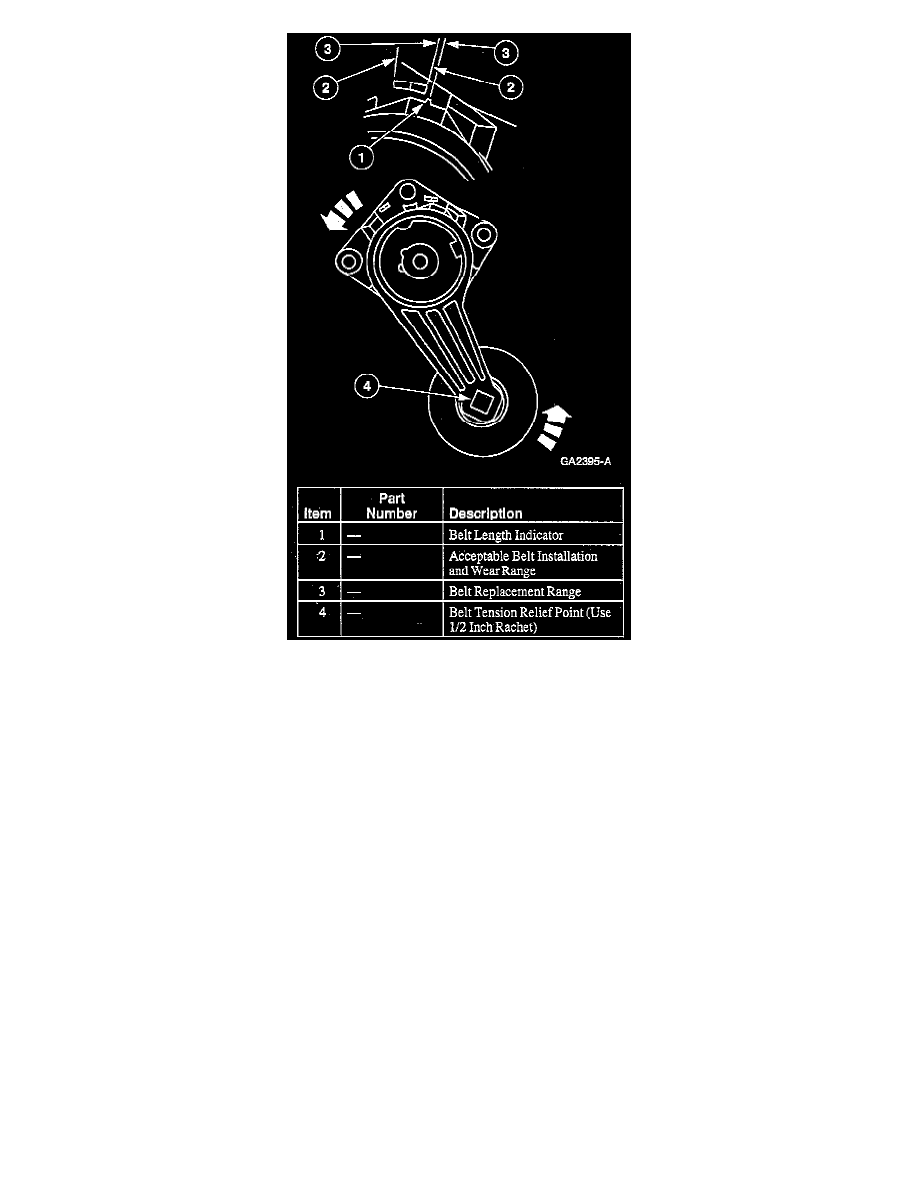F 150 4WD Pickup V8-281 4.6L VIN W EFI (1997)

Drive Belt Tensioner/Belt Length Indicator Without A/C
NOTE: Tensioner is shown in free-state position against arm travel stops.
Drive belt chirp occurs due to pulley misalignment or excessive pulley runout. It can be the result of a damaged pulley or an improperly aligned pulley.
To correct, determine the area where the noise comes from. Check each of the pulleys in that area with a straightedge to the crankshaft pulley, look for
accessory pulleys out of position in the fore/aft direction or at an angle to the straightedge.
Drive belt squeal is an intermittent noise that occurs when the drive belt slips on a pulley during certain conditions, such as engine start up, rapid engine
acceleration, or A/C clutch engagement.
Drive belt squeal can occur:
1. If the A/C discharge pressure goes above specifications:
^
The A/C system is overcharged.
^
The A/C condenser core airflow is blocked.
2. If the A/C OFF equalized pressure (the common discharge and suction pressure that occurs after several minutes) exceeds specifications.
3. If any of the accessories are damaged, or have a worn or damaged bearing or internal torsional resistance above normal. All accessories should be
rotatable by hand in the unloaded condition. If not, inspect the accessory.
4. If fluid gets on the drive belt. This includes power steering fluid, engine coolant, engine oil or air conditioning system lubricant. If fluid does get
on the drive belt during service, clean the drive belt with soap and water and thoroughly rinse with clean water. The drive belt does not have to be
replaced if no apparent damage has occurred.
5. If the drive belt is too long. A drive belt that is too long will allow the drive belt tensioner arm to go all the way to the arm travel stop under certain
load conditions, which will release tension to the drive belt. If the drive belt tensioner is resting on the stop, replace the drive belt.
NOTE: The drive belt tensioner arm should rotate freely without binding.
6. If the drive belt tensioner is worn or damaged.
